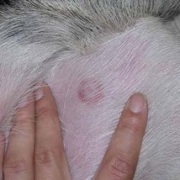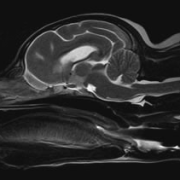Lyme Disease in Dogs
Lyme disease is caused by a parasite called Borrelia Burgdorferi and is transmitted via tick bites.
Ticks in Jersey are typically found in grassland, scrub, shrubs and on low-hanging tree branches. They tend to climb on board an animal when they brush against them.
Female ticks lay eggs each spring. They can lay around 2000, which are tiny (0.7mm long). After laying their eggs, female ticks shrivel and die.
Tick eggs hatch as six-legged larvae in the summer of the same year they are laid. They’re about the size of a full stop.
The larvae remain inactive until the following spring when they climb grass shoots or trees and wait for a host such as a dog, cat, mouse, squirrel, rabbit, bird, deer, cow or sheep to pass.
They then spend up to a week sucking the blood of their host, before falling to the ground.
A year later they re-emerge to search for another host to latch on to. This time they feed for up to 11 days before detaching and falling to the ground. At this point, the tick matures into an adult.
Once again, the tick will remain inactive until the following spring, when they’ll start their third and final search for another host.
Once they find it, adult female ticks will feed for between eight and 12 days. During this feeding frenzy, their weight will increase by as much as 100 times before they lay their eggs and die off. The three-year tick cycle will then start all over again.
The transmission of the parasite begins 36 to 48 hours after the tick has started feeding.
Ticks are most acitive from March to November.
Lyme disease
This is an inflammatory disorder, which can become chronic if left untreated.
Humans can get the disease if they are bitten by an infected tick.
In dogs, the most obvious signs of Lyme disease include a distinctive “bull’s eye” lesion around the site of the bite (see photo) lameness, inflamed (enlarged) lymph nodes and fever.
Symptoms of Lyme disease in humans are flu-like, including extreme tiredness, muscle pain, muscle weakness, joint pain and headaches.
They can also include stomach ache, poor sleep, disturbances of the central nervous system and the distinctive “bull’s eye” rash.
If you or your pet suffer any of these symptoms, you should contact a doctor or vet immediately.
Groom your dog regularly to check for infestations and discuss tick control for your pet with our staff.
If you think your dog has ticks or is carrying a tick-borne disease, contact your vet straight away. This is especially the case if your pet suffers unexplained lameness, joint stiffness, fever, lethargy or loss of appetite after being bitten.












Leave a Reply
Want to join the discussion?Feel free to contribute!